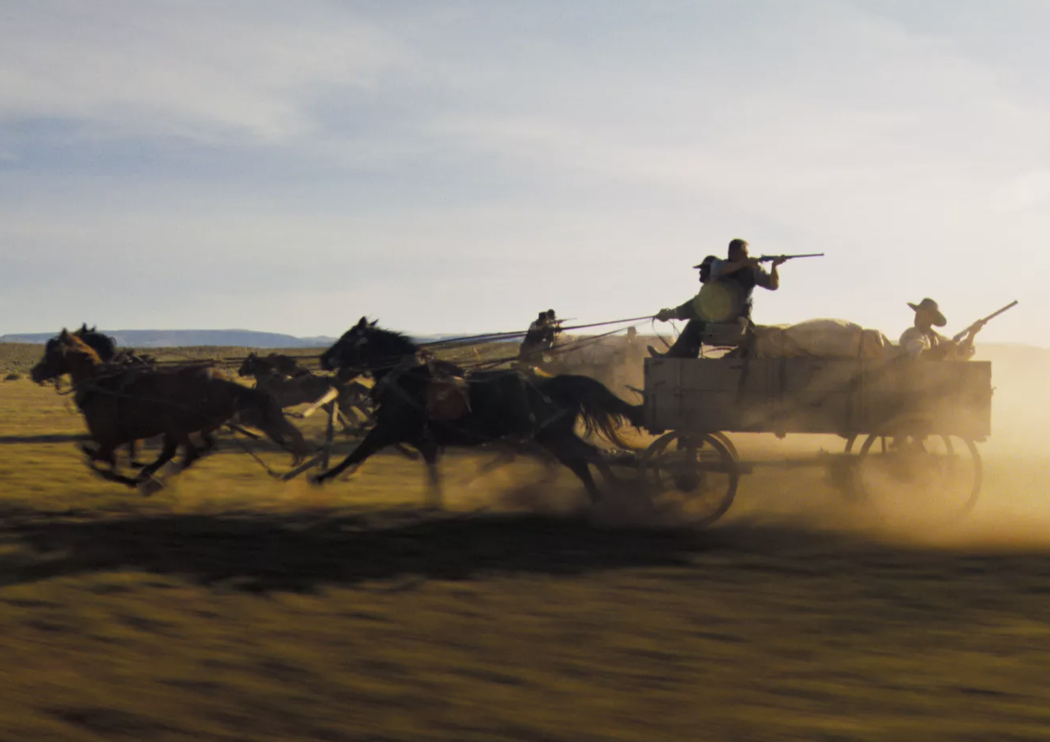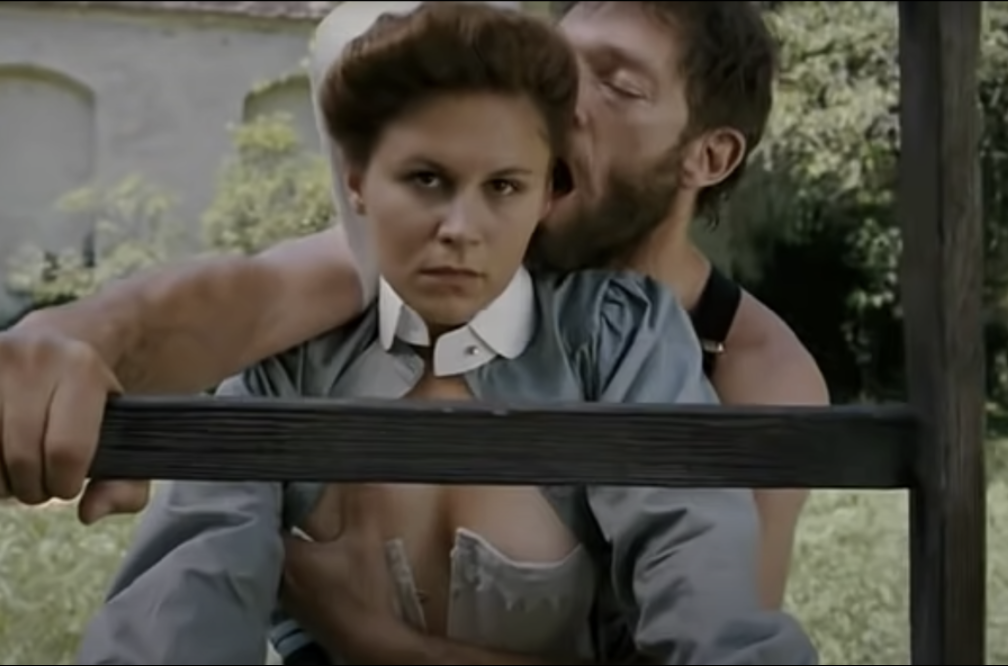Girl Power
It was early Wednesday afternoon, and I was standing in the hallway of the 26th floor of Toronto’s Four Season’s hotel, waiting for my ten-minute quickie with In Her Shoes director Curtis Hanson.
And then a door opened about three feet away and Shoes costar Shirley Maclaine, who owns each and every scene she appears in, peeked out and said hello.
A Fox publicist sitting to MacLaine’s left smiled and nonchalantly said “hey.” I forget how Maclaine replied, but I think she was mainly looking to take a breather.

In Her Shoes star Toni Collette, snapped at Wednesday night’s post-gala party, has shed the weight she gained for the film and is now quite obviously not a brunette, as she is in the film. Director Curtis Hanson, Shirley MacLaine, Cameron Diaz and a bunch of journos (Peter Rainer among them), publicists and agents were also huddling in the VIP area.
The Fox publicist smiled and said, “Shirley, this is Jeffrey Wells, a journalist, and he really likes the film.”
“A man who likes the film….good,” said MacLaine.
The publicist turned slightly in my direction and said, “Tell Shirley what you told me.”
I looked at MacLaine and said, “I think it’s the best chick flick to come along since Terms of Endearment.”
< ?php include ('/home/hollyw9/public_html/wired'); ?>
And I know how phony that sounds. People are always tossing around suck-uppy comments at press junkets, but I really haven’t responded this strongly to a film that’s mainly about older and younger women in the same family grappling with heavy emotional life issues since that 1983 James L. Brooks film.
Really…I haven’t. And if I have I can’t think what other film I might be forgetting about.
“That’s good but it’s not a chick flick,” Maclaine said right away. “It’s really about family. Nice meeting you…bye.” And then she closed the door.
“She’s a bit of a character,” the publicist said. I was thinking to myself, didn’t MacLaine just make a point about a man liking this thing?

In Her Shoes director Curtis Hanson during my ten-minute interview with him at Toronto’s Four Seasons hotel — Wednesday, 9.14, 1:12 pm.
Trust me — In Her Shoes is a chick flick. It just happens to be a very good one, and when a particular type of movie is really exceptional that usually means it’s digging deeper and operating with more skill and finesse than other chick flicks that have gone before. And that means it has become more of a plain old good movie than just a chick flick…even though it started out that way.
It was finally time for my ten-minute Curtis Hanson interview. I’ll get into this sometime over the next two or three days, but Curtis was his usual robust and articulate self and I wished we could’ve had…oh, maybe two or three minutes more? Should I shoot the moon and wish for an extra five?
When I was told I would only have ten minutes with Hanson, I coughed and shifted my weight and leaned forward and said, “Ten minutes?” It felt insulting at first glance. Why not eight minutes? Why not two? The haiku interview!
I wrote a blurb-sized review of In Her Shoes yesterday for the Wired box. I’ll try and write more this weekend…maybe.
Line Walker
Walk The Line holds up and then some. I liked and respected it after seeing it the first time (i.e., last July), but didn’t quite love it. I saw it again Tuesday morning and while I’m still not 100% wowed by the love story element, I have an even greater respect for how lean and down-to-it and well-assembled this film is.
I’ll say it again for the sake of emphasis: this movie, very neatly, is analogous to a Johnny Cash song — solid and straight, no b.s. or flaky embroidery. And it’s very conceivable it could punch through as a Best Picture nominee because of these attributes alone.
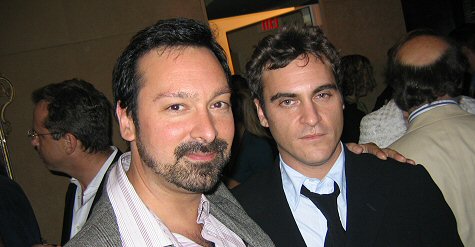
Walk the Line director and co-writer James Mangold (l.) with star Joaquin Phoenix at 20th Century Fox’s post-screening party for Walk the Line — Tuesday, 9.13, 10:10 pm.
Oh, and that item I ran about director James Mangold having allegedly trimmed a bit out of the opening scenes of Walk the Line so it would lessen resemblances to Ray? Bogus. Mangold is telling journalists that the film has been locked for the last four months, and the version I saw this morning in Toronto was precisely the same one I saw in Manhattan, so sorry for briefly muddying the waters.
After seeing four movies today — Walk the Line, the very authentic and unsettling Paradise Now, John & Jane (see review below) and Larry Clark’s lazy, totally masturbatory Wassup Rockers — I strolled over to the Walk the Line party at the Chanel store on the north side of Bloor between Bay and Avenue Road.
The small VIP room was upstairs and very poorly ventilated. No sooner did the Fox publicists wave me into this inner sanctum when Joaquin Phoenix and a friend of his both lit up cigarettes, and you could really smell it.
Daily Mail columnist Baz Bamigboye and I spoke with Phoenix for a few minutes. He’s a nice guy, cool dude. I loved hearing that he hasn’t seen Walk the Line yet, either in a screening room or with an audience, and he has no plans to see it in the foreseeable future. He laughed when he said this, and his laugh has a very slight tone of perversity.

Jane Seymor and husband James Keach, producer and ground-floor instigator of Walk the Line at same after-party — Tuesday, 9.13, 9:55 pm.
I complimented Phoenix on his ultra-realistic fight scene with Mark Wahlberg in The Yards, which is one of the all-time greats. I was surprised to hear that he and Wahlberg didn’t have a stunt guy advising them, but worked out the rollin’ and tumblin’ on their own. They wore knee pads and just told each other, “Okay, I’m gonna hit you and you’re gonna fall down the stairs and then…”, etc.
Mangold, dressed in a tweed jacket and just as warm as I was, was friendly and gracious. I asked him about the film’s best scene, which he wrote, in which Sun records owner Sam Phillips tells Cash and his band during an audition that he doesn’t believe Cash’s signing of a gospel tune, and that he needs to sing some- thing tough and real, etc. Mangold agreed it’s one of the film’s best, and he toasted actor Dallas Roberts, who plays Phillips, for making the scene play as well as it does.
I also spoke to producer James Keach, who knew Cash for several years and tried, with Cash’s approval, to launch his own Cash biopic for a long while before he tied in to the Fox/Mangold/Phoenix project.
Keach and I talked about Cash’s first wife, Vivian, and how the way she’s written and the actress who plays her, Ginnifer Goodwin, makes her seem like the world’s biggest complainer and worst marital partner…a total drag.
What did they get married for? I asked Mangold. Was it sex or…? Mangold said Cash once told him he got married to Vivian because he considered her a dead ringer for Pier Angeli, who was (allegedly) the great love of James Dean’s life.
Curried Hell
For three days I’ve been looking for a new film that would provoke a really strong reaction (the last was Sydney Pollack’s Sketches of Frank Gehry, which I saw on Saturday) and it finally happened this afternoon when I saw Ashim Ahluwalia’s John & Jane.
It’s basically about those Bombay or New Delhi guys we talk to all the time for tech support and who sometimes cold-call to try and sell us worthless crap…those repulsively polite Indian humanoids who’ve brought so much irritation and frustration and pure sputtering rage into our lives…ah, yes.

Image from Ashim Ahluwalia’s John & Jane
I don’t hate John and Jane, but I can’t say I enjoyed watching it.
I may have felt a tiny bit oppressed by the elitist buzz that decreed early on (as ascertained in a Peter Howell piece than ran a week ago last Saturday) this was a must-see. But I could see right off it’s a worthy, decently made thing as well as humanistic statement of sorts — half-compassionate, half-ironical.
Ashluwalia is clearly trying to lend a sad human face and some kind of darkly ironic perspective to the economic scourge that is Indian outsourcing.
But I loathe and despise those Indian phone-center workers, mainly because 90% of them are morons when it comes to any kind of serious technical challenges regarding PDA’s or computer hardware or e-mail issues.
They tie you up with their ninny-nanny questions and they waste your time and sometimes come close to destroying entire work days, and if I could clap my hands and eliminate all instances of Americans like me ever again speaking with Indian tech support guys between now and the end of time, I would clap my hands.
You sit and watch John & Jane and you say, “Okay, here they are in the flesh…those relentlessly considerate and persistent boobs I’ve been speaking with from time to time over the last few years…and it turns out they might be more miserable than myself.
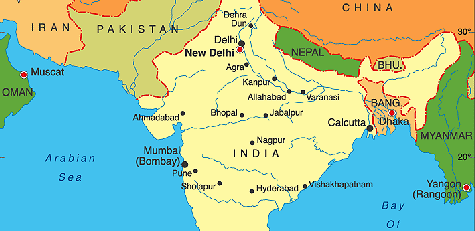
“They feel economically fucked over by the companies they work for,
and some want better lives and some have the discipline and focus to perhaps raise themselves to the next level…but they all seem to lead spiritually depleted (or at least wanting) lives, and a couple of them seem so brainwashed by the lure of the American materialistic dream that it’s making me slightly ill.
“And…what am I supposed to take from this? I still despise these guys. I still hate that I’ve wasted so many hours of my life talking to them. So what exactly am I getting from this movie other than a reminder that we’re all fucked one way or the other?”
Just before seeing John & Jane I caught a noon screening of Hany Abu-Assad’s Paradise Now, the Warner Independent release (Nov. 11) about a couple of Middle Eastern childhood friends recruited to become suicide bombers against a target in Tel Aviv.
After seeing both I realized I’d like to see a hybrid that blends the two. It would be about two American lonely guys who so hate Indian phone centers that they’ve gone a little bit wacko. They assemble a Fight Club-like team of 12 or 15 guys to fly over to India to become suicide bombers — martyrs for the cause of wiping out as many Indian phone-bank centers as they can.
What sustains them, of course, is a belief that Americans back home will privately think of them as heroes. I don’t know that I’d feel quite that way myself if this were to actually happen, but I must say my reactions would probably be mixed.
Fresh Grabs
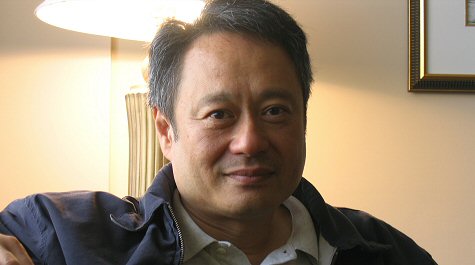
Brokeback Mountain director Ang Lee at beginning of interview at Toronto’s Park Hyatt — Monday, 9.12, 11:35 am.
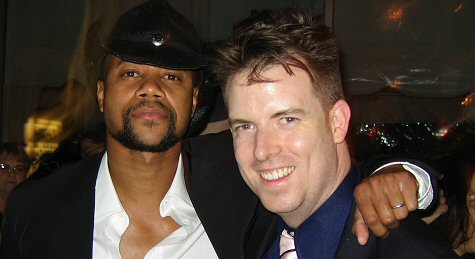
Pick Up The Mic director Alex Hinton (r.) and Cuba Gooding at a party for Hinton’s film, known in festival circles as an explosive documentary on the world of queer hip-hop, on the penthouse floor of the Manulife building — Sunday, 9.11, 11:50 pm. Producer Steve Nemeth (a good guy) was there, and Jeff “the Dude” Dowd and Mickey Cottrell invited me, and the view…

…of the Toronto nightscape was awesome — Sunday, 9.11, 11:35 pm.

Charlotte Rampling, easily the most alluring and delectable woman I have gazed upon so far at the Toronto Film Festival (and that covers a lot of hotties). In town to promote Laurent Cantet’s Heading South (Vers le Sud), in which she costars, Rampling was sitting at a party thrown on Monday, 9.12, by Catherine Verret and the French Film Office. The location was Prego, at 150 Bloor Street.

Jeff Stanzler, the very sharp and engaging director-writer of Sorry Haters, at IFC pizza party at Prego thrown from 5 to 7 pm on Monday, 9.12. Haters‘s next festival showing is on Friday evening, 9.16, at the Cumberland.
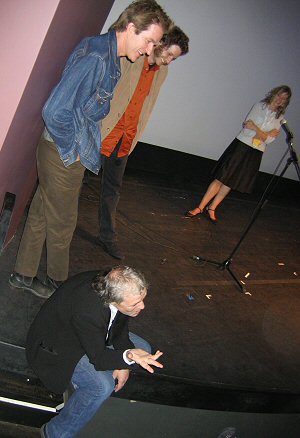
A post-screening discussion of Abel Ferrara’s Mary at Isabel Bader theatre on Sunday evening. Ferrara sat on the edge of the stage and let go with his usual raspy-voiced moody-genius colorful-downtown-guy number as he answered questions. Costar Matthew Modine stood directly behind Ferrara. Standing next to Modine was the film’s editor, Langdon Page.
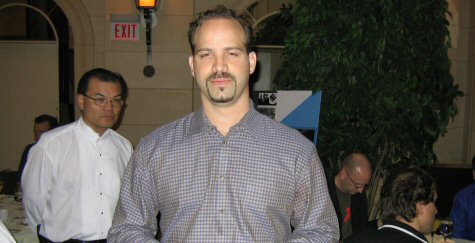
The War Within director and co-writer Jeff Castelo, about a young Pakistani guy whose plan to blow himself up as part of an attack on New York City is re-examined at the 11th hour. Castelo grew up in Mountainside, New Jersey, which is walking distance from my hometown of Westfield, N.J. Pic was taken at HDNet/Magnolia Films breakfast at Toronto’s Windsor Arms hotel — Monday, 9.12, 8:40 am. (Notice the partially shadowed features of Bubble director Steven Soderbergh, sitting behind Castelo and to his left.)
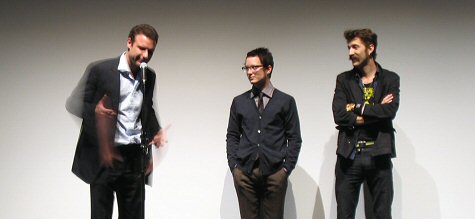
During the q & a that followed Monday evening’s public screening of Liev Schrieber’s Everything is Illuminated, a broadly played road movie about a young Jewish American lad (Elijah Wood) visiting the Ukraine to commune with his family’s roots and history. That’s director-writer Schreiber standing at left in front of the mike, with Wood and costar Eugene Lutz to the right.

Karen Young (l.) and Louise Portal, costars with Charlotte Rampling in Laurent Cantet’s Heading South, at Monday’s French Film Office party at Prego — 9.12, 12:45 pm
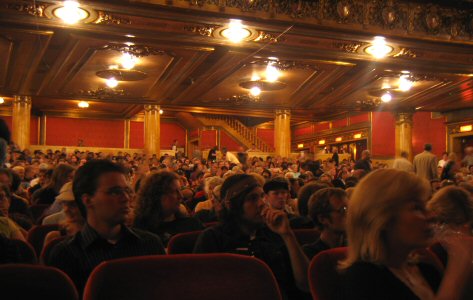
I realize I just ran a shot of the Elgin theatre prior to a screening last weekend, but here’s another one…taken just before Monday afternoon’s showing of Michael Haneke’s Cache (a.k. a., Hidden) — 9.12, 2:55 pm
Master Builder
Sydney Pollack’s Sketches of Frank Gehry, which I caught yesterday at a public screening at the historic Elgin theatre, is a stirring, hugely likable portrait of the most daring and innovative architect of our time.
As corny as this sounds, Sketches left me with a more vivid feeling of celebration and with more reasons to feel enthused and excited about life than anything I’ve seen so far at this festival.
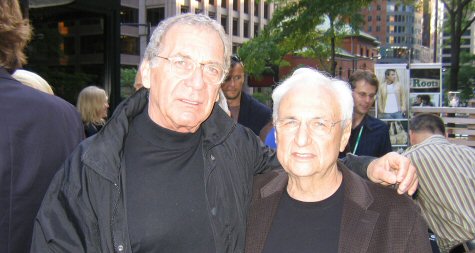
Director Sydney Pollack, architect Frank Gehry at Saturday afternoon’s cocktail party for Sketches of Frank Gehry in downtown Toronto — 9.10, 6:25 pm.
I knew a few things about Gehry before seeing this film, but not a whole lot. Now I feel like I know a few things. The man is the Pablo Picasso of architects. He’s a risk-taker who lives big and tosses the creative dice all the time and really goes for it. And I now know about his significant creations (the most famous being Disney Hall in downtown Los Angeles and a seaside museum in Bilbao, Spain), how he creates, who he mostly is, where he’s been.
Sketches is more than just a meet-and-understand-Frank-Gehry movie — it’s a contact high.
It’s a film that lets you into the head of a genius in a very relaxed and plain-spoken way, and it lets you share in the sense of being a person of Gehry’s magnitude — a guy who has created a kingdom out of a supreme confidence in his dreams, but at the same time someone honest enough to admit he doesn’t precisely know what he’s doing much of the time.
This is partly due to Gehry having been very open and unguarded with Pollack as the doc was being shot, and partly due to Pollack having sculpted this film in a way that feels more personal and congenial and relaxed than your typical portrait- of-a-noteworthy-person movie.
And yet Pollack doesn’t relent in passing along all the information we need to know about Gehry. It’s all done with total thoroughness and clarity of purpose.

Gehry’s Guggenheim museum in Bilbao, Spain.
I met and spoke with Gehry and Pollack at a nice cocktail party on Wellington Street late yesterday afternoon, courtesy of publicist Amanda Lundberg. What a pleasure to hang with these guys. I left the party feeling wise and steady and optimistic about everything.
Sketches of Frank Gehry will air on the PBS “American Masters” series in late ’06, but Pollack first wants it to play theatrically. This should happen. I can see this film being an essential “see” with people of a certain stripe, and yet a ten year-old kid could watch it and understand almost everything.
I can only repeat that the film is much more than just a sturdy documentary — it’s a profound turn-on. I’ve looked at Gehry’s buildings and designs — those weirdly bent and sloping pieces of steel and sheet metal and glass and what-have-you — but I never really “saw” them until yesterday.
There’s a wonderful edit right at the beginning of the film, which I won’t spoil by describing in too much detail. Suffice that it takes Gehry’s doodly drawings and brings them into full-metal aliveness in a single stroke.
There’s another delicious moment when Julian Schnabel is asked about Gehry’s press critics, and he refers to them as “flies on the neck of a lion…they’re the sort of people who complain that Robert Duvall’s character in Apocalypse Now is over the top.”

Terry Gilliam, Jodelle Ferland during shooting of Tideland
Just before the Gehry party I saw Terry Gilliam’s Tideland, which everyone I’d spoken to had warned me away from. (One guy told me it’s the worst film of the festival so far; another called it “unreleasable.”) This is why I wanted to see it, frankly. I like seeing films that everyone has trashed because I always seem to find something about them that I like or admire.
But not this time. Tideland feels Gilliam-esque (visually alluring and semi-pastoral at times with a Fisher King-like fetish for dust and grunge and curio clutter) but it was very tough going, for the most part. I’m talking about zero tension, funereal pacing, no engagement in the characters to the point of engendering hostility, a maddening sense of directorial indulgence, etc.
“It is [Gilliam’s] willingness to push his material to the extreme edge that makes him a true original,” says Toronto Film Festival director Piers Handling in the program notes. This signature has also resulted in two critically dumped-on movies in a row (this and The Brothers Grimm.)
Tideland is basically about the fantasy life of a little girl named Jeliza-Rose (Jodelle Ferland), a sire of junkie parents (Jeff Bridges, Jennifer Tilly) who both dead of overdoses, leaving the kid to imagine voices, play with tiny doll heads she wears on the tips of her fingers and explore her imaginings to her heart’s content.
She eventually becomes friends with a moron named Dickens (Brendan Fletcher) and his witch-like sister Dell (Janet McTeer), and now we have three wackos living in their dreams and acting weird for weird’s sake, or for Gilliam’s sake…whatever.
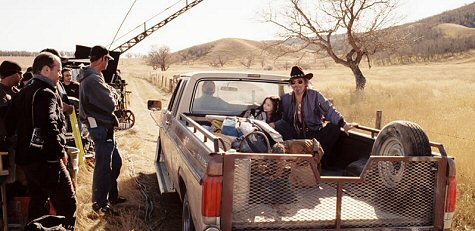
During shooting of Tideland.
I really can’t do this, I told myself. I can’t sit through another Terry Gilliam stylistic free-for-all masturbation movie. Others had the same notion. Two guys in front left somewhere around the 45 minute mark. Then another one left, and then another. I’ve seen this domino effect before. People say to themselves, “If all these guys are leaving, this gives me an excuse to leave too.”
I turned to Chicago Tribune critic Mark Caro, who was sitting to my immediate left, but he was toughing it out. I said to myself, “If Caro goes, I go….and I won’t feel as guilty about walking out on a Terry Gilliam movie.” Another guy left. A woman left. Caro was looking around and chuckling at the exodus, but he wouldn’t budge. So I decided to be a man and just do it on my own.
I next went to a warm, family-friendly dinner party thrown by Sony Classics. It was attended by the Capote crew (director Bennett Miller, actors Phillip Seymour Hoffman, Clifton Collins, Jr., and Catherine Keener, screenwriter Dan Futterman), Breakfast on Pluto director Neil Jordan and star Cillian Murphy, Why We Fight director Eugene Jarecki, and The Devil and Daniel Johnston director Jeff Feuerzig, along with the usual pack of journo-critic freeloaders.
Feuerzig was nice about my having thrown water on his film a couple of days ago. He asked me to see the entire film some day, and I promised I would.
What I actually said in my piece was that I don’t care for Johnson’s music, and without that affinity I couldn’t muster any interest in his emotional and psychological troubles. (Whereas I could when it came to Brian Wilson’s story in I Just Wasn’t Made For These Times because I love Wilson’s music.)
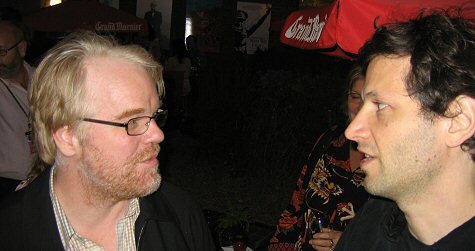
Capote star Phillip Seymour Hoffman (l) and the film’s director Bennett Miller at Sony Classics party at Margaret’s Brasserie — Saturday, 9.10, 7:35 pm.
It felt briefly odd to hear Hoffman speak in his own voice, which is sort of deepish and a tiny bit guttural, rather than his mincing Truman Capote voice, which everyone loves. The crowd at the public screening at the Elgin was obviously eating it up. There was strong laughter here and there. The “Bergdorf’s” line got a big response.
After the Sony thing ended I went to the Brokeback Mountain party and said howdy to Heath Ledger, Terry Gilliam (I didn’t bring up Tideland), producer James Schamus, film journalist Paul Cullum, New York Times reporter Sharon Waxman, the Focus Features publicity team and I forget who else.
Smash-up
It’s a two-bit irony, but there’s no denying it: the professional failure that Orlando Bloom’s character goes through in the opening of Elizabethtown, which is massive and absolute, is not unlike the sense of almost total failure that seems to be enveloping the film and its director-writer Cameron Crowe right now, at the Toronto Film Festival.
Crowe is going to be trimming Elizabethtown down by several minutes, perhaps as much as 15 or 20, but there are so many things in this undisciplined movie that have seemed to so many people at this festival to be terribly wrong, that it seems damn near unfixable.
It could work for some people in the ticket-buying world, but this movie is for all practical purposes finished with the critics and journos who’ve been nothing but supportive of Crowe’s films in the past.
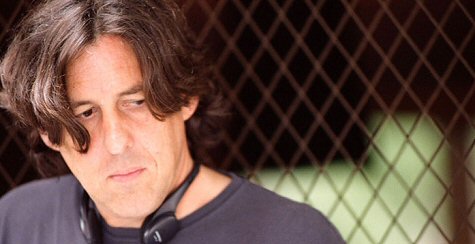
Elizabethtown director-writer Cameron Crowe.
A day and a half has passed since I saw Elizabethtown at Friday evening’s press screening, and I’m still shattered by the half-failure of it. So bummed and turned around, in fact, that I couldn’t summon the courage to attend the Elizabethtown press conference that happened about an hour ago. (It’s now about 12:20 pm.) I thought it would hurt too much to listen to what I was sure would be a display of forced gaiety.
Yeah, half-failure. This is a movie that stabs itself in the chest over and over during the first hour or so, but then it finds itself somewhere near the halfway point and becomes…well, not a movie exactly but a meditation about what it is in life that is joyful and soul-restoring, and which generally keeps us going.
Elizabethtown starts out on a note of futility and plans of bloody suicide, with Orlando Bloom ready to pack it in after a winged running shoe he’s designed has resulted in a loss of nearly a billion dollars.
Then he’s saved, in a way, by news of the death of his father. He forgets about “the plan” and flies to Kentucky to take care of the funeral arrangements. And on the way he meets a plane stewardess (Kirsten Dunst) who’s so oppressively perky and Jean Arthur-ish that…I’m getting ahead of myself and not completing my thought.
Which is this: if you forget about Elizabethtown not working as a real movie — minus most of the disciplines, character shadings and payoffs we’ve seen in Crowe’s previous films — if you forget all that stuff and just go with the meditative flow, it starts to work after the first hour or so.
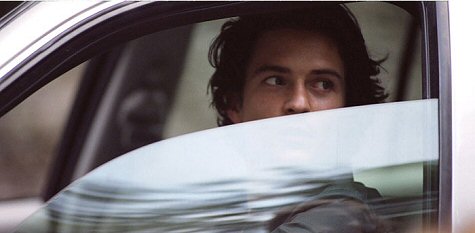
Orlando Bloom
You can’t really believe in it — the movie is way too un-tethered — but you can sorta roll with it and feel the vibe. I did, at least.
I was not having a miserable time at the end, and some (but not all) of the middle is pretty good. The problem, for me, is in the first hour, and I don’t know where to start, or even if I want to.
It’s not just that the crash-and-burn opening (Bloom saying “I’m okay” over and over, his girlfriend leaving him because he’s failed, every last person in the office eyeballing him) is too Jerry Maguire-ish. It feels completely artificial every step of the way, and keeps hitting you with stuff you can’t help but disbelieve or gag on.
I can’t catalogue everything that falls apart in this section, but for openers Crowe doesn’t tell us why the running shoe has died, or why the company didn’t do any product testing, or why Alec Baldwin, the big boss, would sink $900 million-plus into launching a single line…I didn’t believe a second of it.
When something awful has happened to you, people who know you don’t usually look directly at you. Certainly not in a group situation. They usually avoid eye contact because they don’t want to deal with your pain, because they’re afraid it might be catching.
The suicide stabbing device that Bloom nearly uses on himself seems ridiculous. With all the suicide options out there, who in the world would think of stabbing themselves to death with a big knife tied to a workout contraption?
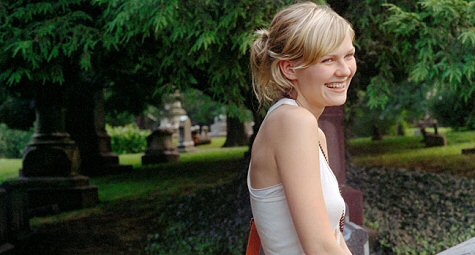
Kirsten Dunst
There has never been a flight from Seattle to Kentucky in the history of aviation with only one passenger on the plane.
There’s an argument with an Elizabethtown local about what color suit his deceased father should wear — they want brown, Bloom insists on blue. And then there’s a shot of the body in the coffin and Bloom’s father is wearing a suit of…dark gray!
When Orlando Bloom’s character finds out that his father has died and he flies off to the bluegrass state, there’s no real reason for his mom (Susan Sarandon) and sister to not come with him.
Sarandon, we are told, starts taking dance lessons right when she learns of her ex-husband’s death, and a mere four days later she’s found a teacher, had a lesson or two and learned enough to cautiously perform a tap-dance routine in front of the Kentucky family…pretty fast work!
I was in shock. I was in denial. I couldn’t accept that this movie was misfiring as badly as it was. But then, finally, the fog lifted. It’s not that Elizabethtown started being good but that it stopped making me groan, and the movie’s basic theme — what makes us stay in love with life? — started to find its feet.
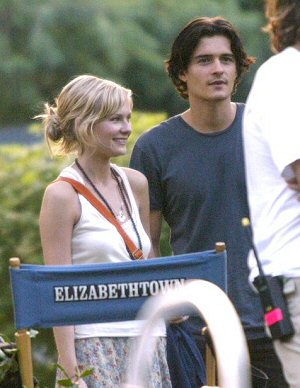
Dunst, Bloom on Elizabethtown set
Someone has written that “those magical moments that survive in memory from the weakest of Crowe’s works are simply nowhere to be found.” No — the last third is actually pretty good, or at least there’s a way to roll and groove with it. That is, if you follow my instructions.
It starts sometime after the all-night cell phone conversation scene (Bloom and Dunst never recharge their phones, and why should they?), and then it starts to grow and build. I actually liked the final road-trip sequence, which a lot of people have told me they couldn’t stand.
Bloom isn’t great in the role, but he’s not bad. The relentlessly positive perkiness coming out of Dunst starts to wear you down after a while. Bruce McGill, Alec Baldwin and Susan Sarandon are…okay. But nobody kills.
About 70 minutes into the film, a certain high-profile movie guy whom everyone knows got up and left the theatre. (He came back later, he says.) As he left to go out through the right-side tunnel, he very briefly turned and looked at the audience as if to say, “I’m a little bit surprised there are so many you continuing to sit there and watch this thing.”
About ten minutes later two major critics sitting a row in front of me got up and left. I’ve walked out on plenty of films but almost never one directed by a name-brand guy like Crowe. Wait a minute…I just walked out on a Terry Gilliam film yesterday. And I admit to being so miserable watching Martin Scorsese’s Kundun that I shut my eyes and fell asleep. But I was still shocked when I saw those two guys get up and bolt.

I wish there was some way for me to believe this movie isn’t dead, dead…deader than dead. But I really think it is.
The next chapter in the Elizabethtown saga will be upon us when an F.X. Feeney-like savior comes along and says, “No, no…you guys missed it! This movie is brilliant. It’s just that Crowe decided to take a big leap over the usual narrative devices and you guys were too constipated or conservative-minded to get what he was doing!”
I am not that guy, but I say again: forget about Elizabethtown doing what you’d like it to do (i.e., delivering the goods the way Billy Wilder used to) and just wait for the here-are-the-things- that-make-life-worth-living portions, which mostly unfold in the second half.












